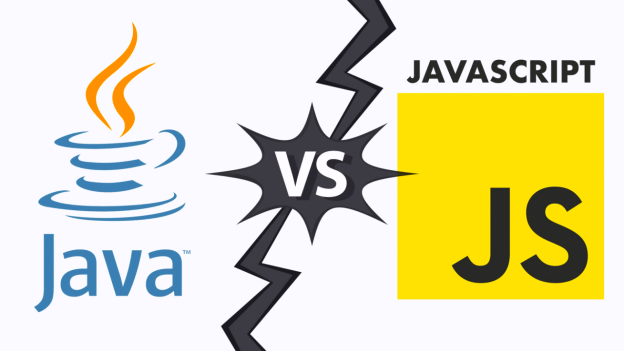Java vs. JavaScript
When it comes to programming languages, Java and JavaScript often find themselves in conversations due to their names' similarity. However, a closer look reveals that they are distinct languages, each with its own strengths, use cases, and features. Let's delve deeper into the nuances of Java and JavaScript, exploring their characteristics and the scenarios where they shine.
I. Java: A Robust General-Purpose Language
A. Overview
Java, born in the mid-1990s under the auspices of Sun
Microsystems, has evolved into a robust, class-based, object-oriented
programming language. One of its standout features is the "Write Once, Run
Anywhere" philosophy, which promotes platform independence.
B. Use Cases
- Enterprise-level
Applications: Java stands tall in the development of large-scale
enterprise applications. Its robust nature and scalability make it the
language of choice for complex business solutions.
- Mobile
Applications: Java's impact extends to the mobile realm, particularly
through its association with Android. Android app development heavily
relies on Java, contributing to the ubiquitous presence of Android
devices.
- Web
Applications: On the server side, Java plays a pivotal role in
building dynamic and interactive web applications. Frameworks like Spring
and Struts facilitate efficient Java web development.
- Desktop
Applications: Java's versatility extends to the creation of
cross-platform desktop applications. The Swing and JavaFX frameworks
empower developers to craft applications with a rich graphical user
interface.
C. Key Features
- Platform
Independence: Java's "Write Once, Run Anywhere" feature
allows code to run on any device with a Java Virtual Machine (JVM),
ensuring cross-platform compatibility.
- Object-Oriented:
Following the object-oriented programming paradigm, Java emphasizes code
organization and reusability.
- Memory
Management: Java simplifies memory management through automatic
garbage collection, reducing the burden on developers.
II. JavaScript: The Language of the Web
A. Overview
JavaScript, born around the same time as Java in the
mid-1990s but developed by Netscape, serves as a lightweight, interpreted
programming language. Its primary domain is front-end web development, enabling
developers to add dynamic content and interactivity to websites.
B. Use Cases
- Web
Development: JavaScript is the linchpin of front-end web development,
allowing developers to enhance the interactivity and functionality of
websites. It operates on the client side, manipulating the Document Object
Model (DOM) and responding to user interactions.
- Server-side
Development: With the advent of Node.js, JavaScript has expanded its
domain to the server side, enabling the development of scalable and
efficient web applications.
- Mobile
App Development: JavaScript's influence extends to mobile app
development through frameworks like React Native and Ionic, facilitating
cross-platform compatibility.
C. Key Features
- Asynchronous
Programming: JavaScript excels in handling asynchronous operations,
making it ideal for developing responsive and non-blocking web
applications.
- Dynamic
Typing: JavaScript's dynamic typing allows flexibility in variable
declarations and type conversions, making it adaptable to changing
requirements.
- Event-Driven
Programming: JavaScript operates on an event-driven model, responding
to user actions and system events to trigger specific functions.
III. Key Differences
A. Usage and Application
- Java:
Primarily used for general-purpose programming, especially in
enterprise-level applications, mobile development (Android), and
server-side web development.
- JavaScript:
Mainly utilized in front-end web development for creating interactive and
dynamic user interfaces. It has also expanded to server-side development
with Node.js.
B. Execution Environment
- Java:
Requires a Java Virtual Machine (JVM) for code execution.
- JavaScript:
Executes in web browsers through the browser's JavaScript engine or on
servers using Node.js.
C. Typing
- Java:
Statically typed, requiring explicit variable type declarations during
compilation.
- JavaScript:
Dynamically typed, allowing variables to change types during runtime.
D. Concurrency Model
- Java:
Supports multithreading for concurrent programming.
- JavaScript:
Operates on an event-driven, single-threaded model with asynchronous
operations.
E. Syntax
- Java:
Features syntax similar to other C-based languages, such as C++ and C#.
- JavaScript:
Although influenced by Java, it boasts a more forgiving and flexible
syntax.
In conclusion, while Java and JavaScript share a common
linguistic lineage, they serve different roles in the vast landscape of
programming. Java's versatility makes it suitable for a spectrum of
applications, from enterprise-level solutions to mobile and web development. On
the other hand, JavaScript's forte lies in making the web dynamic and
interactive, with an expanding influence on server-side development.
Understanding the distinctions between these languages is pivotal for
developers choosing the right tool for their specific programming needs.
FAQs
- Which
applications are best suited for Java development?
- Java
excels in enterprise-level applications, mobile development (Android),
and server-side web applications.
- What
is JavaScript's primary role in web development?
- JavaScript
is primarily used for front-end web development, enhancing website
interactivity and user interfaces.
- How
do Java and JavaScript differ in their execution environments?
- Java
relies on a Java Virtual Machine (JVM), while JavaScript executes in web
browsers or on servers using Node.js.
- What
are the key features that set Java apart?
- Java's
strengths include platform independence, object-oriented programming, and
a robust development environment.
- Which
language has a more forgiving syntax, Java, or JavaScript?
- JavaScript
boasts a more forgiving and flexible syntax compared to the structured
syntax of Java.

Comments
Post a Comment